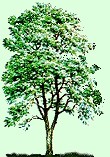Whitebeam Template Reference Documentation
XmlParser Templatebodytext() Generate the text representation of the XML subtree. ADVANCED. Syntax string = rb.XmlParser.bodytext() Parameters The 'bodytext' method takes no parameters Results The 'bodytext' method returns string:
Remarks This method returns the currently accumulated text for the children of the object. That is it will not include the enclosing text of the tag itself. Compare this with the behaviour of the text() method. Suppose we have the following XML: And suppose we generate an XmlTag representation of this tree using rb.page.tagtree() as follows: 'tags' now references the 'blockquote' tag. The string returned from tags.bodytext() would be: contrast this with the behaviour of XmlTag.text(), which would return the entire source.
|


